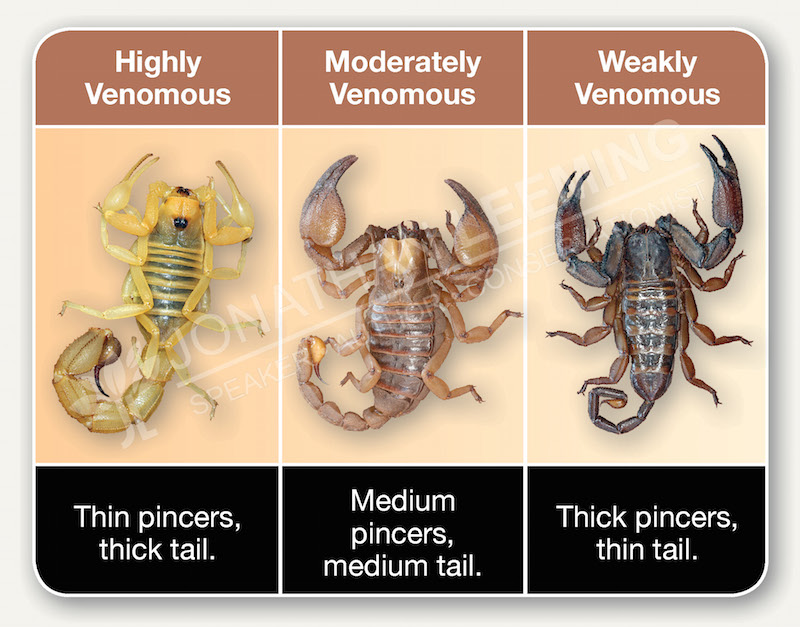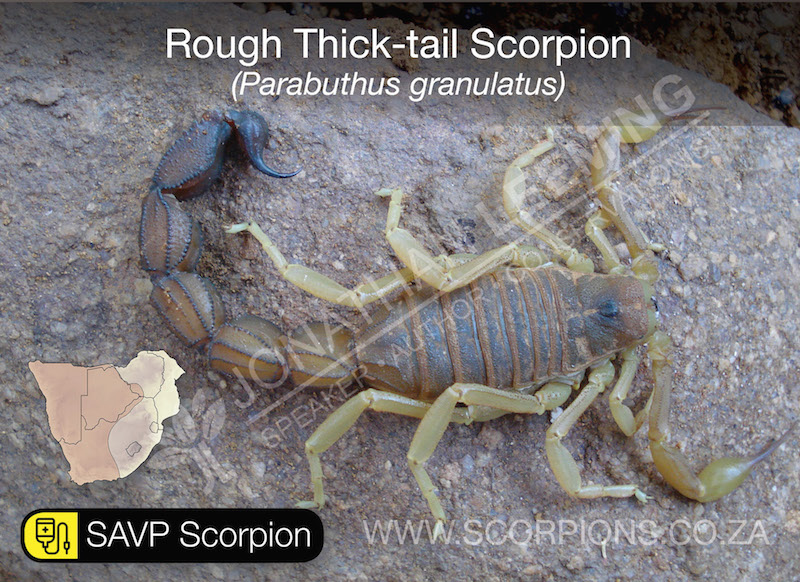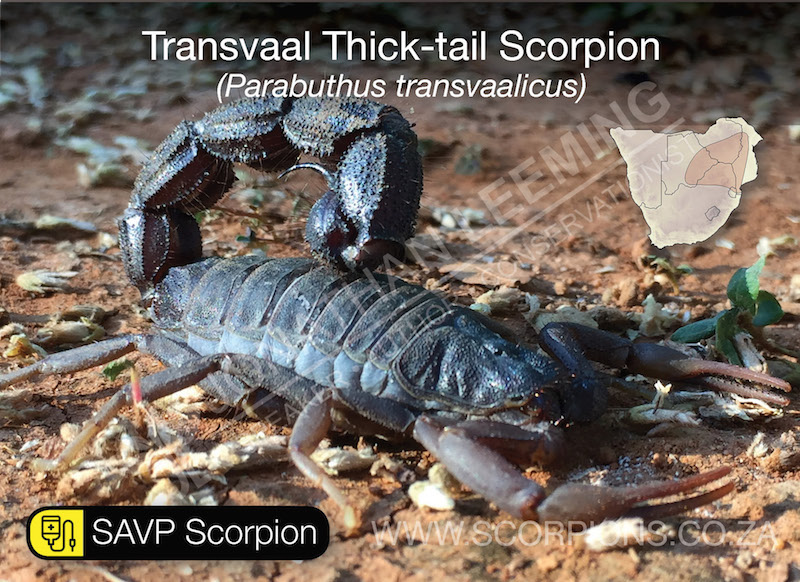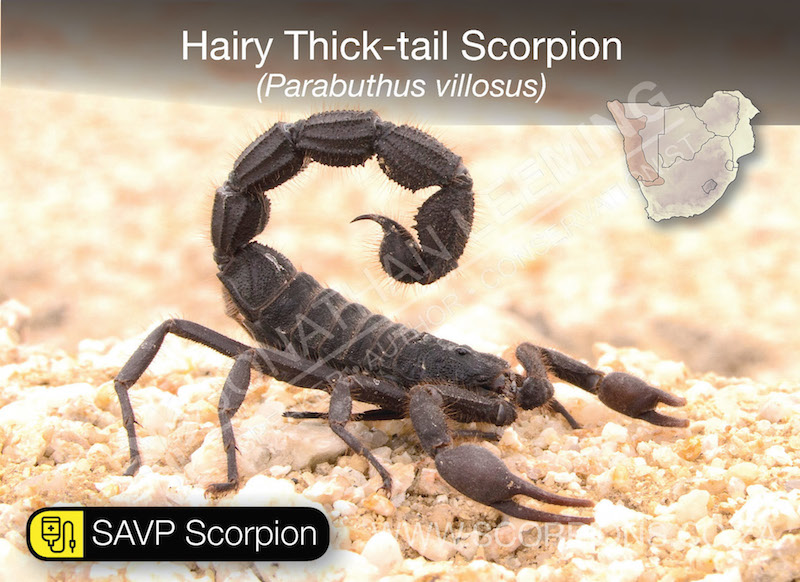All scorpions have neurotoxic venom which has evolved under the context of the scorpion’s natural history. The term neurotoxic refers to where the symptoms occur and not what the symptoms are. Between different species of scorpion there is variation in the biological action of their venom. These differences in biological action can be attributed to the composition and makeup of toxins contained within the venom.
These neurotoxins are basic proteins with a low molecular weight which leads to fast absorption into body tissues. Very few scorpion venoms contain significant amount of enzymes.
All scorpions have 2 venom glands in the sting where they manufacture their venom. When muscles in the sting are contracted, venom is squeezed out. When defending themselves from threats or catching prey, the scorpion regulates the amount of venom injected, according to the circumstances. Two species of scorpion have such strong muscles in their sting that they can exert enough force to spray venom out of the end of the sting.
All scorpions throughout the world possess neurotoxic venom that affects the nervous system in various ways. The toxins in the venom affect excitable cells such as the nerves and muscle tissue in the body by either over or under stimulating them. A common characteristic of a scorpion sting is localised pain at the sting site. These symptoms may persist for a few minutes to a few days depending on the species of scorpion involved. Research has demonstrated how different age groups of patients react to scorpion stings in different ways.
Although many people consider all scorpions to be highly venomous, not all scorpions possess venom potent enough to do humans or animals great harm. Some species have such weak venom that symptoms are no more than an uncomfortable inconvenience persisting for only a few minutes.
Unlike many other groups of venomous animals where an understanding of each species is required to appreciate their venomosity, in southern Africa, there is a reliable way to estimate the venomosity of a scorpion just by comparing the appearance of the pincers to the tail. This is called the venomosity rule of thumb.

Southern Africa is home to about 150 species of scorpion, the majority of which are not highly venomous. It must be noted that the venomosity of a scorpion is not the only factor that determines the outcome of a sting, however it does give us a good and reliable tool for predicting symptoms before they occur.
Within the group of Thick-Tail Scorpions, three species stand out for their exceptional medical importance in Southern Africa. These large and highly venomous species have been associated with medically significant stings and deaths. Children are especially vulnerable to life threatening symptoms from the sting of high risk species.



A sting from any of these scorpions should be considered a medical emergency. Children are especially vulnerable to class 4 symptoms, especially from the sting of the Rough Thick-tail Scorpion (Parabuthus granulatus). South African Vaccine Producers (SAVP) Scorpion Antivenom is often required to treat the sting of these 2 high risk species.
Although the stings of these 3 high risk species are notorious for resulting in class 3 and 4 symptoms, a sting form any large (greater than 40mm in length) species of highly venomous scorpion is likely to result in similar symptoms.

This content is the product of many hours of work based upon years of experience. If you found it useful or of value, then please consider a small donation to help me offer more content like this!
I'm on a mission to reduce the burden of spider bites and scorpion stings across Southern Africa!
Newsletter | Public Events | Books & Workbooks | Presentations | Activities |Professional Development | Shop
